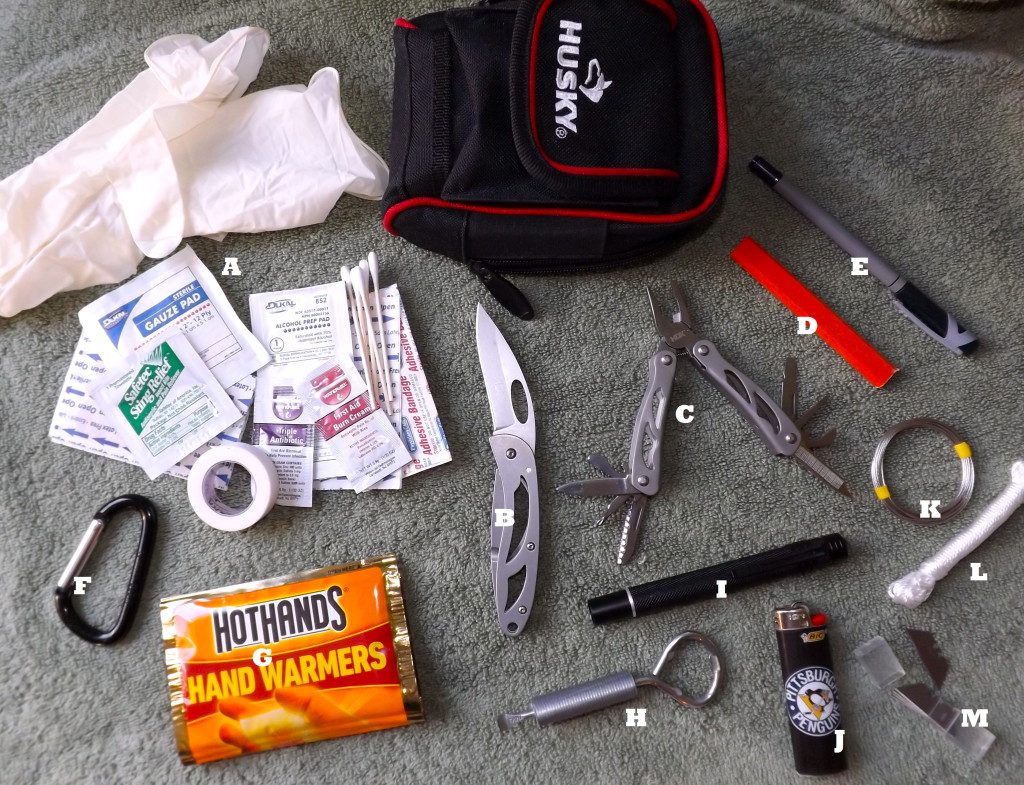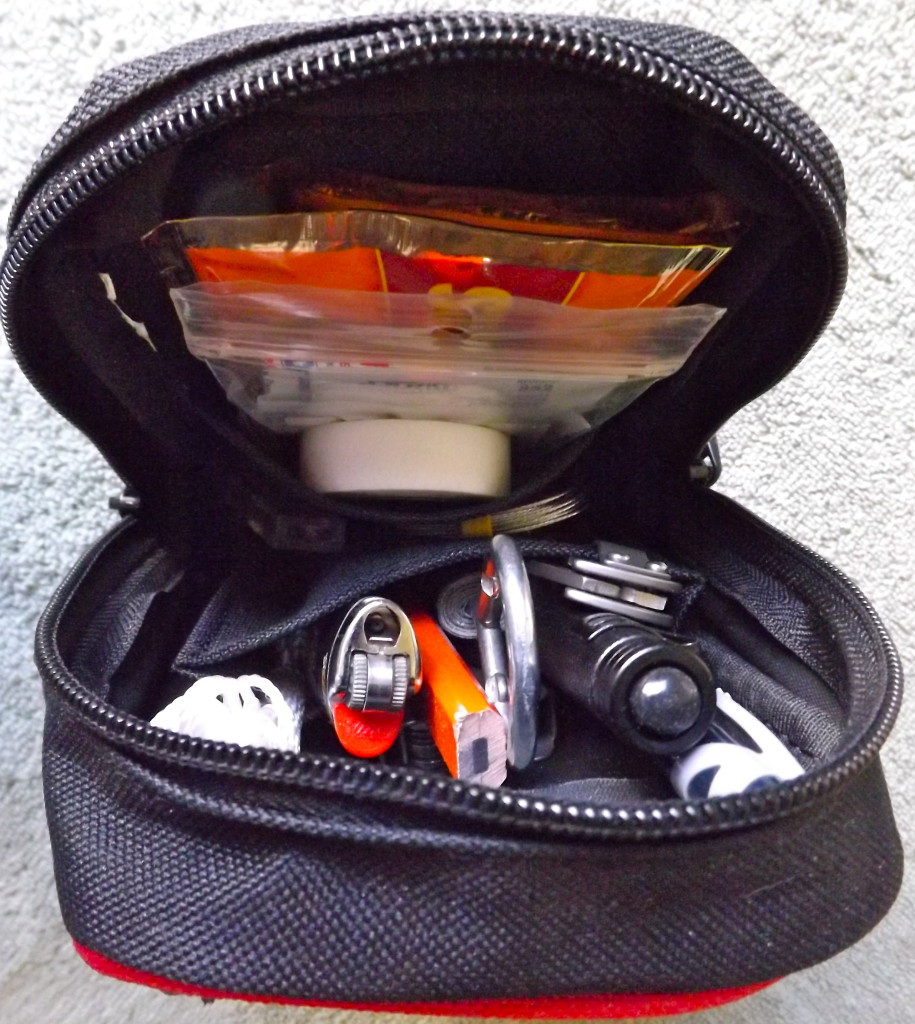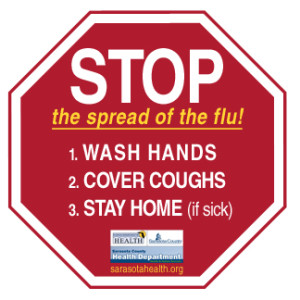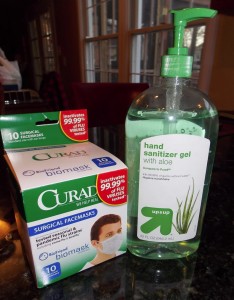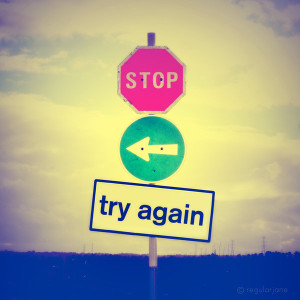by Nick Romaniello -
I spend an exceptionally large amount of time at hardware stores, and big-box home centers, acquiring materials for my work. I’m usually rushing through with a list of specifics but on occasion I have a chance to browse and consider items for use outside of the scope of my business. When looking through the eyes of a prepper, stores like Home Depot, Lowes, and True Value are a goldmine of survival and readiness gear. Big ticket items like generators and chain saws are obvious, but there is a wealth of smaller preps hidden throughout the shelves that won’t break the bank. If you haven’t had the chance, it’s well worth the time to visit your local home center and just explore the isles.
To put this idea into practice I decided to assemble a thorough, yet budget-minded, Every Day Carry (EDC) kit from items only available at the Home Depot I frequent. Here is what this kit contains:
- A. First Aid Supplies: I purchased a small first aid kit, and then paired it down to what was practical for this kit.
- B. Folding Knife: Any Boy Scout will tell you not to leave home without one of these.
- C. Mini Multi Tool: Pliers, screwdrivers, wire cutters, file etc. Multi tools pack a lot of function into a small package. This mini multi tool came packaged together with the knife above and a full size multi tool on clearance for $5.
- D. Carpenters Pencil: Thicker and more durable than a regular pencil, it could also be carved into a toggle for fishing or whittled into a pile of dry shavings for tinder.
- E. Ball Point Pen: You never know when you will need to write something down.
- F. Carabiner: Useful anytime something needs to be clipped to something else.
- G. Hand Warmers: It’s January in Pittsburgh so can you blame me for throwing a couple of these into the kit? In the summer you can delete these to make room for a sweatband.
- H. Paint Can Opener with Duct Tape: Paint can openers are usually free when you buy a can of paint and are handy for use as a miniature pry bar. The top is a bottle opener. Duct tape is wrapped around the middle for easy access.
- I. LED Flashlight: This LED penlight outputs 23 lumens, far better than the 2 lumens of the comparable xenon bulb penlight. Plus the bulb never needs replacing.
- J. Lighter: Fire good!
- K. Picture Wire: 9 feet of 40lb wire can make some pretty strong improvised repairs and wont be affected by heat.
- L. Masons Line: Basically a heavy duty braided twine that can become anything from a shoelace or a belt to emergency fishing line.
- M. Mini Razorblades: Five of these come in a protective case for $.99 and weigh almost nothing. They would be useful for any extremely fine cutting tasks (particularly medically related) that the folding knife is too bulky for.
The whole kit fits into a sturdy belt pouch and cost around $35.
EDC is a personal matter and can range from keys and a wallet to handguns and survival knives; so don’t take this necessarily as what I think you should carry but rather as an example of some of the resources available from places you may not have previously considered. While specialized survival gear sites and catalogs are endlessly fun to look through, don’t forget the local hardware and building supply spots. There are plenty of wallet friendly options for the thrifty prepper. What can you find that will help you be prepared?

